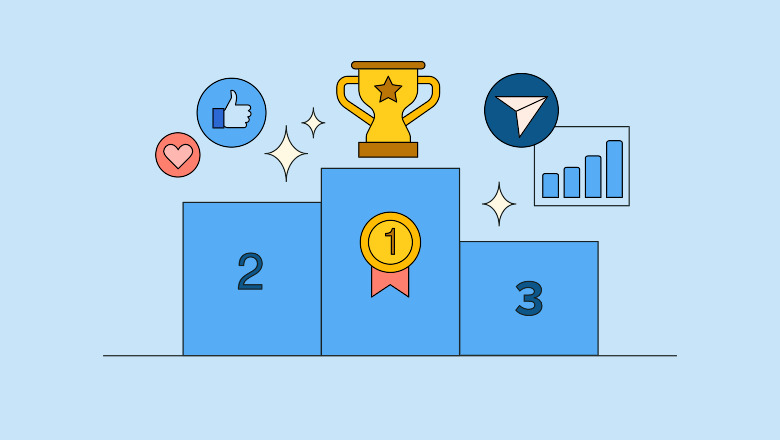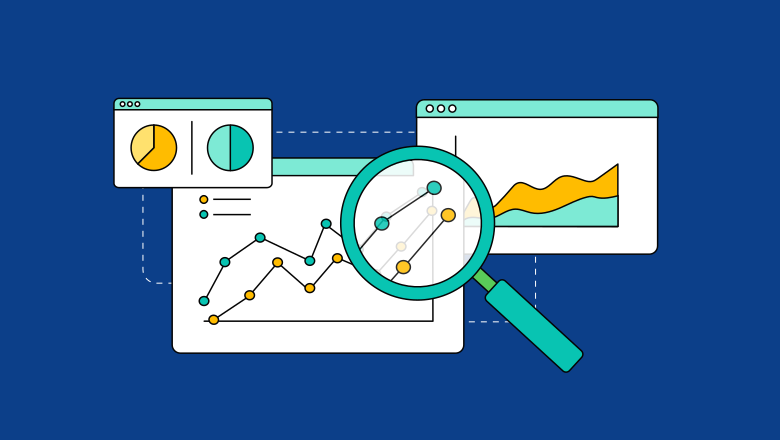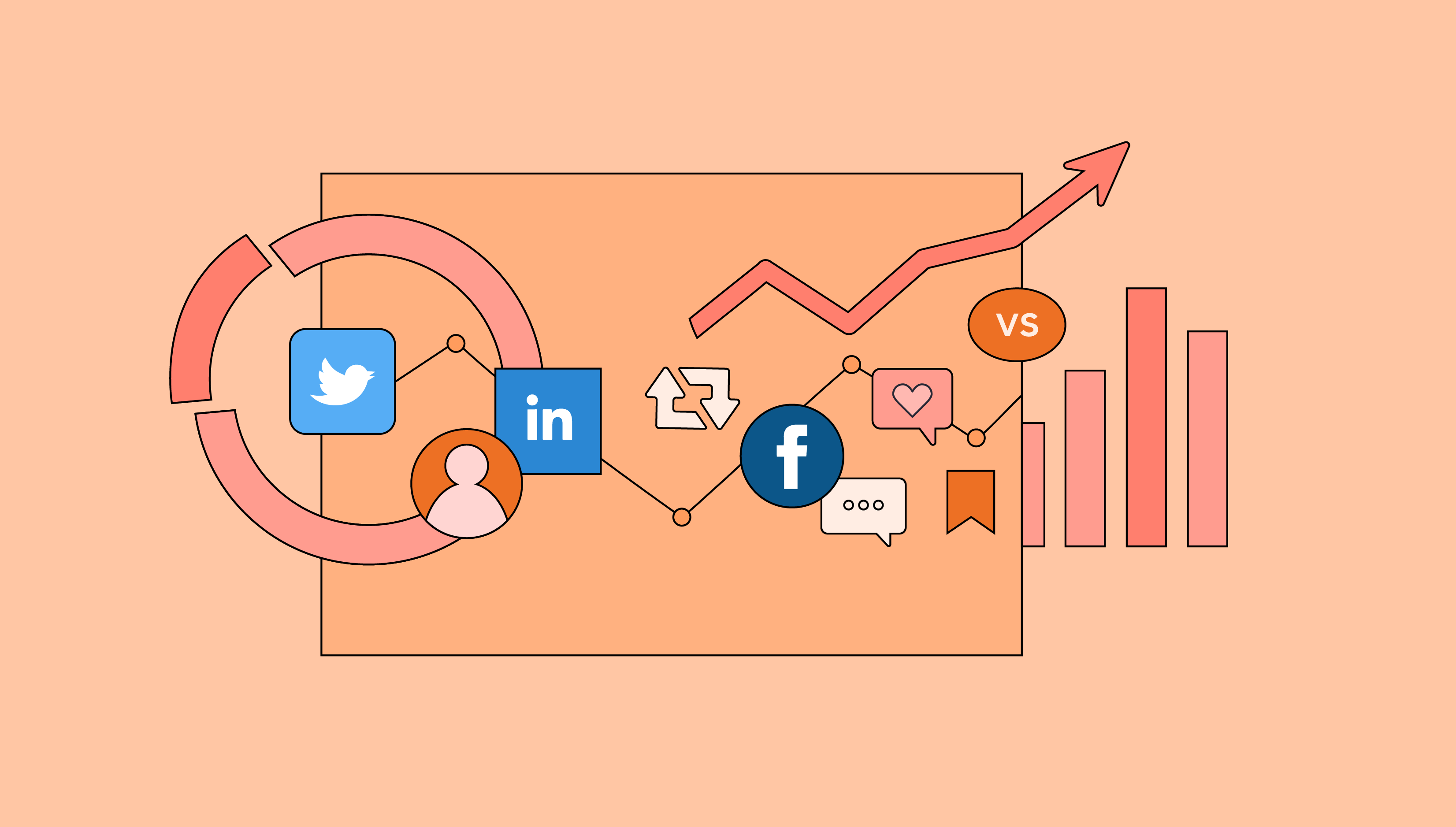
Competitive Analysis
Everything you need to know to conduct a competitive analysis (plus template)
Discover how to conduct a competitive analysis or optimize your analytics to improve your brand. Uncover how to analyze your contenders to draw insights to unlock new opportunities and get ahead of the competition.
Reading time 10 minutes
Published on April 30, 2024

Table of Contents
Summary
- Regular competitive analysis empowers brand evolution. Competitive intelligence data enables businesses to understand industry trends and customer preferences.
- Conducting a competitive analysis helps businesses identify strengths, weaknesses and opportunities to develop a unique value proposition.
- Leveraging competitive analysis insights across the company enhances customer focus, informs product development, refines brand messaging, sets competitive benchmarks and facilitates market entry strategies.
The adage “comparison is the thief of joy” doesn’t apply to brands. Regularly conducting a competitive analysis of your top competitors is an exciting opportunity to better understand your industry and customers. Gaining greater visibility into the competitive landscape empowers you to light the spark that ignites your brand’s evolution.
If the thought of crafting a competitive analysis seems daunting, we have you covered. In this holistic guide, we’ll explore everything you need to know from why it matters for businesses to specific steps you can take to conduct a competitor analysis. And we share templates, tools and examples to help guide your analysis. Feel free to jump ahead to the sections most relevant to you.
What is a competitive analysis?
A competitive analysis, also known as competitor analysis, is the process of conducting a detailed examination of business intelligence data from across your industry and comparing it to your brand’s performance benchmarks. Analyzing data from competitive intelligence tools helps you identify your strengths and weaknesses, stay on the pulse of market trends and carve out your unique value proposition.

Businesses can do competitive analysis at a high level, but you can also get more granular by focusing on a specific aspect(s). For example, a business might conduct a competitive analysis for another company’s products, sales and marketing. But a marketing-focused competitor analysis might incorporate data such as your adversaries’ website content, social media presence, brand positioning, pricing strategy and product tiers.
A competitive analysis is essential for future-proofing your business. With the right intel, you can forecast where your industry and competitors are heading, leading your organization with a data-driven strategy and vision.
Why is competitive analysis critical for business?
Competitive analysis insights are critical resources for every member of your team. Here are five ways to leverage your analysis company-wide:

1. Competitor analysis empowers marketing strategy
Use competitive analysis to better understand your customers and gain a new perspective. Analyze your competitors’ messages and product positioning to confirm the target audiences and pain points they focus on. Compare your findings with your own personas and foundational documents like message architecture or value statements to identify any weaknesses in your strategy.
2. Inform product roadmaps
Armed with a competitive analysis, product teams have the information they need to incorporate highly requested competitor features into their roadmap. Research and development teams can assess market opportunities, helping to fill white space in the industry and gain an edge over the competition.
3. Enhance brand messaging
Competitor analysis research benefits teams at every point in customer acquisition. Marketing teams can tailor top-of-funnel messages to edge out the competition while sales teams can create winning pitches based on competitor weaknesses. Sharing competitor intelligence across the organization empowers teams to build stronger content and close deals.
4. Identify competitive benchmarks and KPIs
Your competitors’ performance helps you understand how to measure your brand’s performance. For example, if a competitor exceeds social media benchmarks in your industry, then you know your performance needs to improve to remain competitive. Use competitor data to craft your goals and targets.
5. Prepare for new market entry and campaign launches
Understanding the state of your industry is integral to entering a new market or even launching a new campaign. Having a clear picture of your competitors paves the way to outline your market differentiators and position your brand’s unique stake in the industry.
Competitive analysis template
If you’re not sure how to get started, use a competitive analysis template for guidance. Our social media market research worksheet explores how you can use social insights to analyze your performance and compare it to your competitors. This template will help you:
- Benchmark your competitors so you understand what success means within your industry and among your shared audiences.
- Dig into the strategies of your highest-performing competitors, and brainstorm tactics to reach the same level of success while finding your niche.
- Share your findings with stakeholders to validate your approach and long-term vision.
 Keep reading for step-by-step instructions on conducting a competitive analysis in the next section.
Keep reading for step-by-step instructions on conducting a competitive analysis in the next section.
How to do a competitive analysis?
An impactful competitive analysis breaks down complex data into digestible learnings and actionable takeaways. Rather than just comparing metrics, product offerings or campaign taglines, your analysis should provide a complete view of your competitive landscape, find the “why” behind your competitors’ performance and answer specific questions to help your business evolve.
We’ll dive into the specifics of each step in the next section, but to complete a competitive analysis, you’ll need to do the following:
- Set main focus areas and goals
- Identify competitors
- Compare products and/or services
- Conduct a competitor marketing analysis
- Review distribution channels
- Report and share recommendations based on data-backed insights
6 steps of competitive analysis
Follow these steps to conduct a thorough yet focused analysis:
1. Choose your main focus and goals
Evaluate your industry from a bird’s-eye view. What are the major opportunities and challenges facing everyone in your industry? Who are the key players? What will the industry look like in five to 10 years?
After you’ve grounded your analysis in the big picture, pick a few focal points to narrow your competitive intelligence. Your competitive analysis can inform every aspect of your business, so it’s important to be specific about your goals.
- Do you want to launch new products or features?
- Are you trying to create stand-out marketing campaigns?
- Do you want to ensure your new rebrand will resonate with your audience?
- Are you refining your sales strategy to close more deals?
Having concrete goals enables you to know where you need a deep dive and where it’s okay to stay surface level.
2. Identify your key competitors
If you’re in a crowded industry, it might be tempting to track every competitor or only look into the largest companies. Your main competition might not be the largest business overall—it’s the largest threat to your market position.
Pinpointing the top two to three true competitors will yield the best results for your research. Remember, your top competitors are the companies your ideal customer would select if they didn’t choose you. Those companies have similar value propositions, market share and comparable offerings.
Use competitive benchmarking to zoom in on specific details of the market landscape, gauge performance and identify the competitors who are in the lead in your main focus areas. Along with benchmarking, you can talk to your sales team and existing customers to determine what competitors they considered before choosing your company’s products or services.
3. Compare your product offerings
Channel your inner private investigator and scour your competitors’ product offerings. As you begin competitive product analysis, consider how your offerings stack up to the competition. What are the unique advantages of your products? Where does your competition have the upper hand?
If you need help answering these questions, consult feedback your customers have shared with your sales team or on review sites online.
4. Conduct competitive market analysis
Assess your market and positioning by conducting a marketing competitor analysis for your direct competitors—the process of researching and analyzing the marketing strategies and tactics of your industry contenders to pinpoint strengths and weaknesses.
For this step, have your target audience, personas and ideal customer profile resources on hand. Use them as a rubric to assess how well your competitor’s marketing addresses the audience’s needs and pain points.
Consider the following questions:
- What content types do your competitors use?
- How much content have they developed in total?
- What is their publishing frequency?
- How many needs and pain points do your competitors claim to meet?
- What calls-to-action (CTAs) and unique selling propositions do they include in content?
- Is their content accurate, polished and well-researched?
- Do your competitors address the same needs as your brand?
- Are there still pain points left unanswered?
These are just a few examples, but you can use these questions as a starting point to identify opportunities for promotion and find industry whitespace that your brand can fill in the future.
5. Review distribution channels
Once you have a sense of your competitors’ overall target market and positioning, use competitive monitoring to crawl their distribution channels, website and social media profiles.
Note how they share and present their content, and how their social media strategy comes to life. Pay attention to the affiliations and events listed on their website. The competitive analysis template from the previous section will guide you.
6. Reporting and response roadmap
Synthesize your findings in a competitive analysis report and present recommendations in a response roadmap or a competitor map, which contextualizes your research and provides conclusions for data-backed decision making. For example, a SWOT analysis chart is a great example of a competitor map that can visually show your competitors’ strengths, weaknesses, opportunities and threats.
However, if other strategy frameworks better illustrate the findings of your research and analysis, skip the SWOT in favor of the best option for you. There are no firm rules about what competitive analysis data sharing must look like as long as it provides value to stakeholders.
After you wrap up reporting, you’re not done with competitive research, synthesis and dissemination. Promote a culture of competitive intelligence across your organization that empowers the collecting and sharing of data and analysis on a regular basis.
Competitive analysis example
Using the steps above, let’s perform a mock competitive analysis using Sprout’s fictional coffee shop, Sprout Coffee. Even though this is a fictional business, you can mirror the process for selling software, services and other products.
1. Setting analysis goals
Situation analysis: In this scenario, Sprout Coffee is expanding their coffee chain to a new location and wants to find out how their brand will fare in this locale’s coffee scene. In the last five years, many other coffee shops opened in the same neighborhood, but the uptick in professionals who work remotely has driven demand for cafes sky-high—which makes this area prime for expansion.
Goal: Gather intel about competitors in the new neighborhood and surrounding areas to fuel a strong expansion plan. We will consider price, quality and variety of menu options.
2. Identify competitors
Using Sprout’s conversation overview dashboard, the coffee brand examines the top-performing keywords and hashtags associated with their business online, which is how they hone in on their two biggest competitors.
- Competitor #1: CoffeeCabin
- Competitor #2: JavaHut

3. Compare competitor product offerings
Now it’s time to evaluate competitor offerings for price, quality and variety, and compare them to Sprout Coffee.
CoffeeCabin:
- Average drink cost: $4.50
- Certifications: Organic, Fair Trade
- Variety: 30 menu options, including coffee staples
JavaHut:
- Average drink cost: $2.00
- Certifications: N/A
- Variety: 15 menu options with mostly classic flavors
Sprout Coffee:
- Average drink cost: $3.25
- Certifications: Fair Trade
- Variety: 20 menu options, including brand-specific drinks
4. Complete competitive market analysis
Using our brand’s existing target audience research and reviewing competitor websites and social media pages, we will evaluate our competitors’ positioning and how well it resonates with our shared audience.
Audience needs and pain points:
- Affordable, high-quality coffee
- Seasonal flavor variety
- Peaceful and aesthetic atmosphere for remote work
CoffeeCabin:
- Exceeds industry quality standards and ethical guidelines
- Offers a variety of classic choices, but no specialty drink promotions
- Is the most expensive option
- Refined cafe atmosphere shines through in marketing collateral
JavaHut:
- Meets pricing requirements
- Limited variety can leave audience underwhelmed
- Does not meet quality standards
- Only a pick-up window and outdoor seating available
Sprout Coffee:
- Reasonably priced, but not the most affordable option
- Exceeds ethical guidelines, but does not meet quality standards
- Delivers an exciting rotation of seasonal, holiday and speciality offerings
- Cozy cafe and community events encourage remote workers to feel welcome
5. Review digital distribution channels
For Sprout Coffee and our pseudo competitors, Instagram is the most prominent distribution channel. To dig into Instagram performance data, we reference Sprout Social’s Instagram competitor dashboard which reveals JavaHut’s handle @JavaHouse is the leading competitor in terms of follower size.
JavaHut:
- Followers: 17 million
- Upward audience growth
Sprout Coffee:
- Followers: 3,680
- Some periods of impressive audience growth in the past month
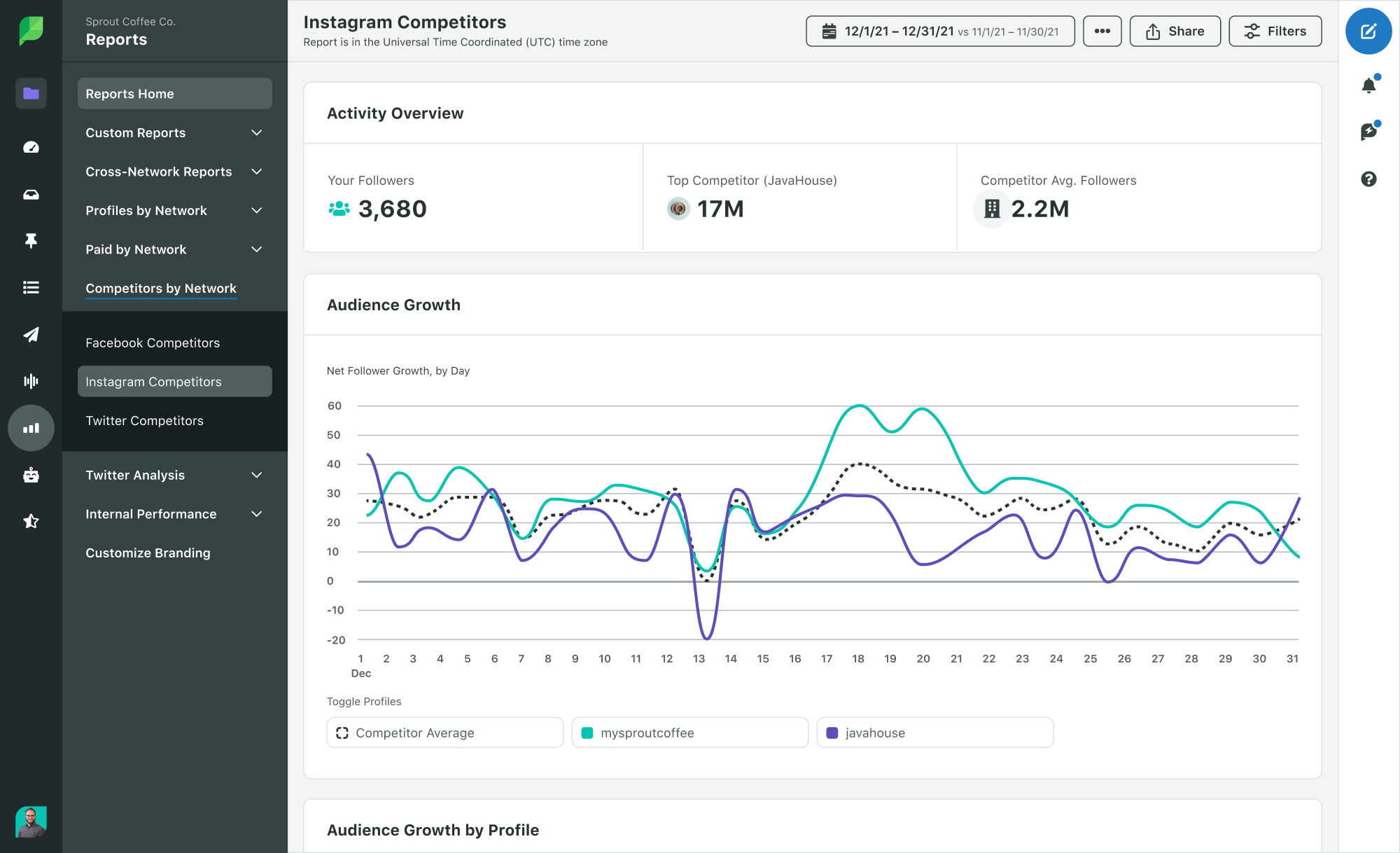
6. Reporting and next steps
To package their competitive analysis and reporting, Sprout Coffee decided to compile a SWOT analysis for their new location using the data collected in steps 1-5.
Strengths:
- Affordable, mid-market cost
- Wide variety of drink options
- Inviting, community-oriented space
Weaknesses:
- Significantly smaller Instagram following than CoffeeCabin or JavaHut
- No organic certifications
Opportunities:
- Expand Instagram presence using user-generated content from community events
- Explore seasonal promotions and discounts to compete with lower-cost options
Threats:
- Crowded market, with new competitors continuing to move into space
Now it’s time for Sprout Coffee to take all this information and present it to stakeholders and other teammates, and use it to formulate specific strategies.
Top competitor analysis tools
Some aspects of your research will be manual, but others are better off handled by artificial intelligence (AI) and automation. The right competitive analysis tools will optimize your data collection, giving you more time to focus on your strategy.
To analyze millions of social media posts, see how you rank in search engines and view historic insights in real time, check out these competitor analysis tools:
Sprout Social
Sprout Social’s suite of competitor reports and listening tools gives you deep insight into what works for your industry, what resonates with your audience and where you need to adjust your strategy to stand out from the competition. Whether you’re looking for post volume, type and frequency, hashtag usage or audience growth, Sprout will aggregate information into an actionable competitive analysis dashboard.
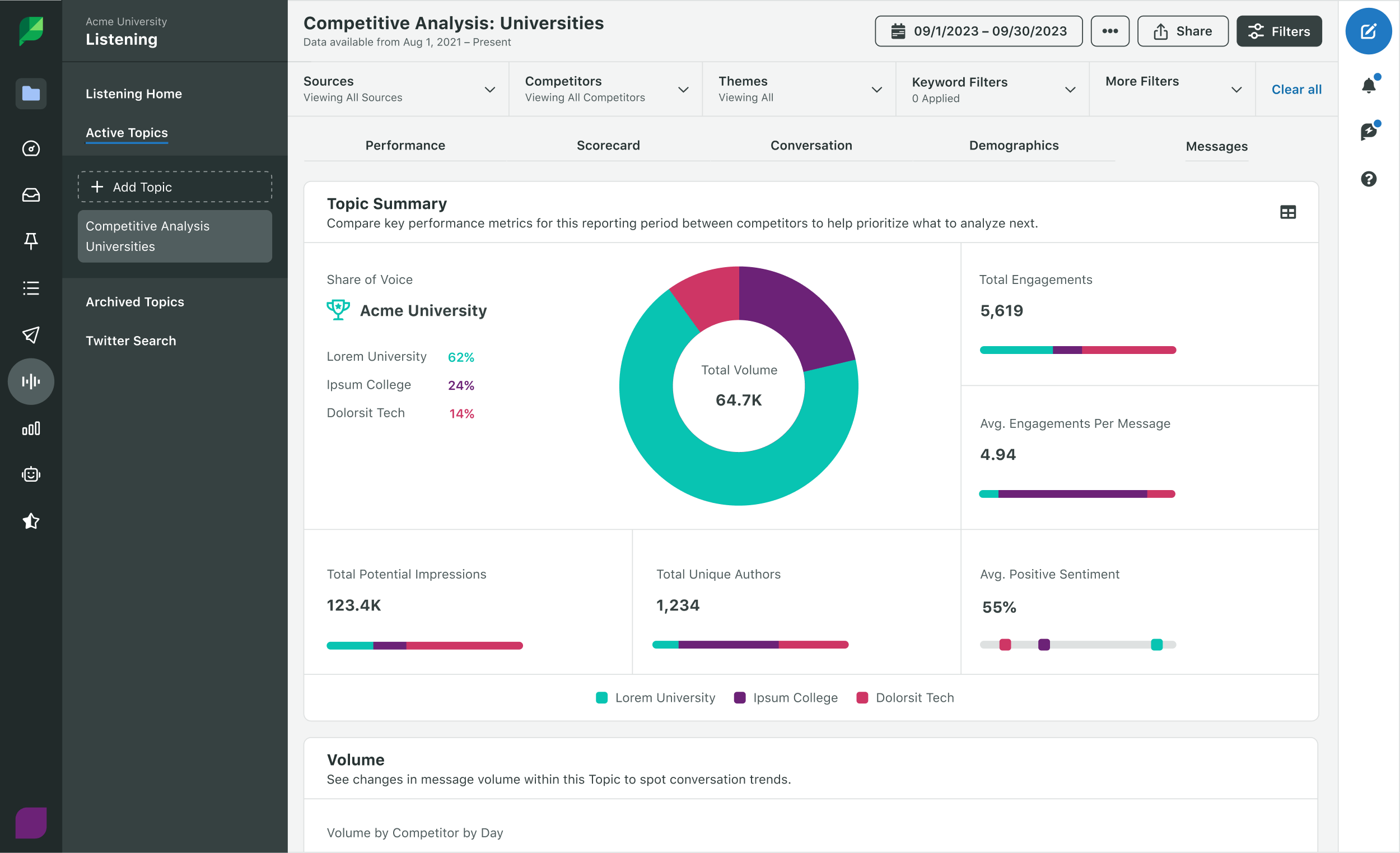
Go even deeper with network-specific performance reports and in-depth engagement data that shed light on how different types of content resonate with audiences across each major network, including Facebook, Instagram and X, formerly known as Twitter.
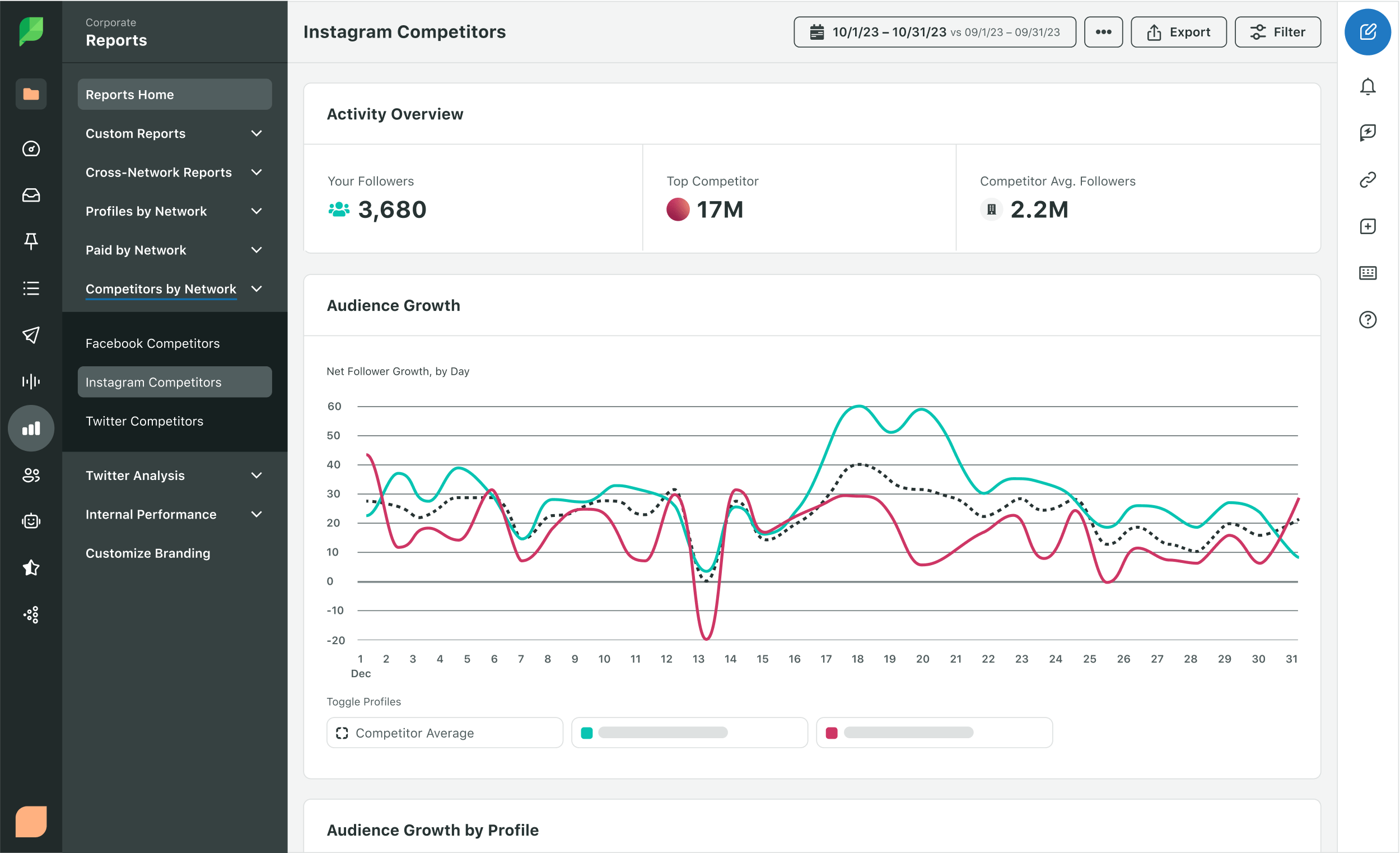
Being able to swiftly gather these essential competitive insights will give you an advantage when making adjustments to your strategy and sharing your analysis with stakeholders.
Semrush
Semrush is a widely used search engine optimization (SEO) tool with industry-leading competitor analysis features. Use Semrush to pull your competitor’s backlinks and monitor changes in their traffic and ranking, like this sample dashboard demonstrates.
Semrush is a valuable tool for understanding who your competition is from an SEO perspective. Highlighting what keywords are targeted by competitors might directly influence your content strategy.
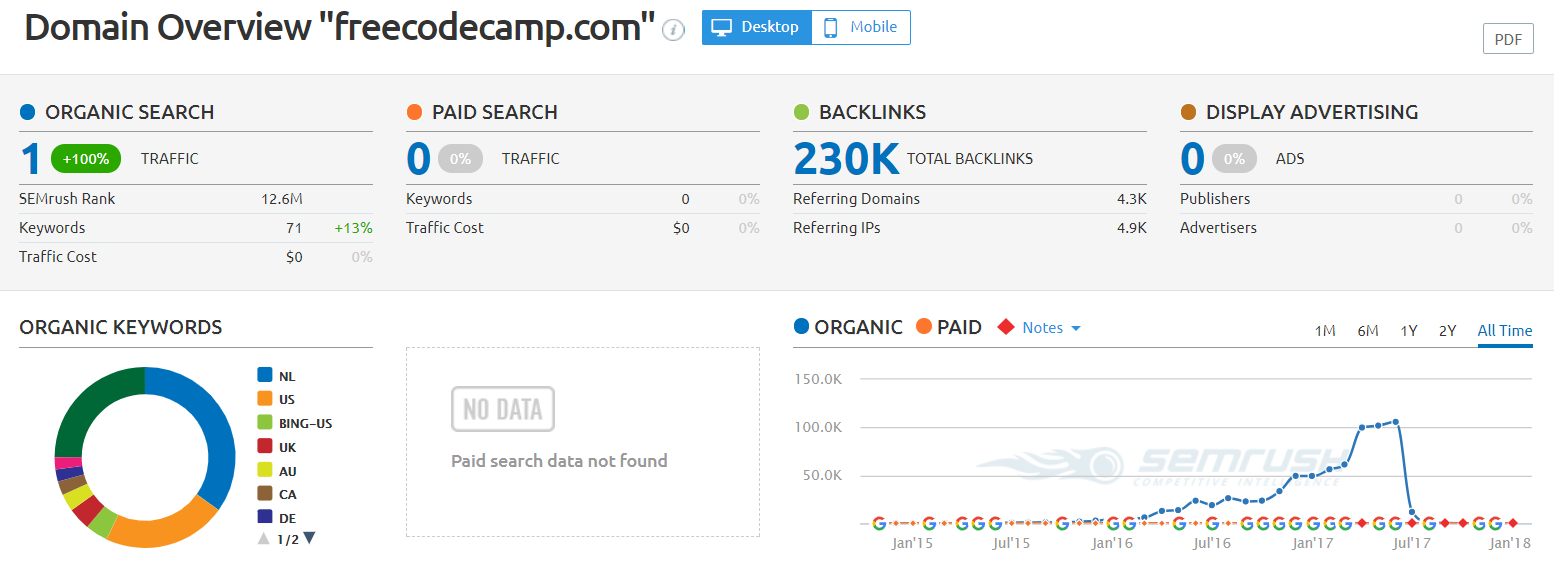
BuzzSumo
BuzzSumo allows you to look at the top-performing content for relevant topics for your brand and specific competitors. The content marketing tool looks at engagement and total reach on social sites. This helps identify who is leading the pack in share of voice and industry thought leadership. It can also help you brainstorm new ideas for your content calendar.
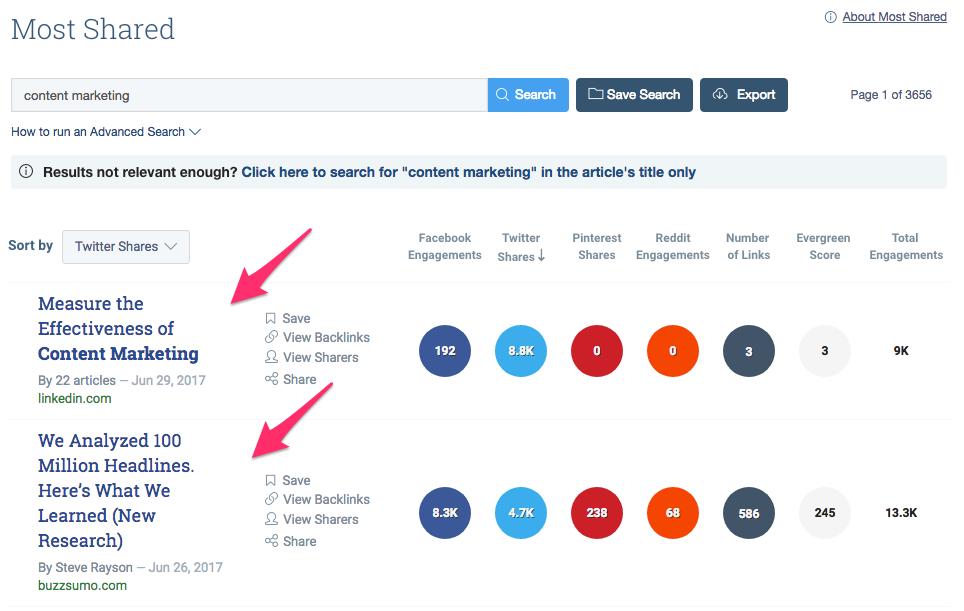
Want to learn more? Read our comprehensive list of social media, SEO, content, email and advertising competitor analysis tools.
Keep your friends close and your competition closer
Conducting a regular competitive analysis helps ensure the long-term health of your business. By sharing competitor analysis insights with your entire organization, you give everyone on your team the resources they need to make informed decisions, critical product optimizations and messaging refinements.
To learn more about how you can strengthen your competitive strategy within Sprout, sign up for a free 30-day trial.
FAQ
Is SWOT a competitive analysis?
A SWOT analysis is a framework that visualizes strengths, weaknesses, opportunities and threats, and it’s an important step in creating a competitive analysis. But a complete analysis requires competitive intelligence research before building a SWOT matrix, and might include other frameworks, too.
What is the difference between competitive intelligence and competitive analysis?
Competitive intelligence is the data that fuels a competitive analysis. Competitive intelligence can come from key sources such as your competitors’ website, social media presence, brand positioning, pricing strategy, product tiers and even recent job postings. Competitive analysis describes the critical thinking required to turn intelligence data into meaningful, actionable insights.
How often should you perform a competitive analysis?
A competitive analysis should be performed on a regular basis, but the exact cadence should be determined by the needs of your organization. For example, you could conduct your analysis on a weekly, monthly or quarterly basis.
What are types of competitor analysis?
Depending on the goals of your competitive analysis, you can address a wide variety of business needs. While there are multiple frameworks like SWOT (Strengths, Weaknesses, Opportunities, and Threats), customer journey mapping and growth-share matrixes that can be included in your competitor analysis, a competitor analysis is not strictly defined by a type. Approach your analysis with your goals and competitors in mind.
What are the main drawbacks of competitive analysis?
Manual data collection can drain your team’s time and only deliver partial data. By using competitive analysis tools, you will help overcome these drawbacks with machine-generated data.
Additional resources for Competitive Analysis
Everything you need to know to conduct a competitive analysis (plus template)
Competitive insights: 6 essential market factors and how you can collect them
How to use competitive benchmarking to grow your social presence
How to build a competitive analysis report with examples and tools
Competitor mapping: The benefits and how to create your own
12 of the best competitive intelligence tools for marketers
How to conduct a competitive product analysis, and why you should
How to gain a competitive advantage by analyzing marketing initiatives by competitors
Why competitive research will become more important for social teams in 2024
Competitive monitoring: tracking the competition to stay ahead
15 competitor analysis tools to spy on your competition
Competitive intelligence: The complete guide for marketers
How to perform a social media competitive analysis (+ free template)
Why creating a culture of competitive intelligence should be every brand’s next move
How to one-up your competition with social media industry analysis


